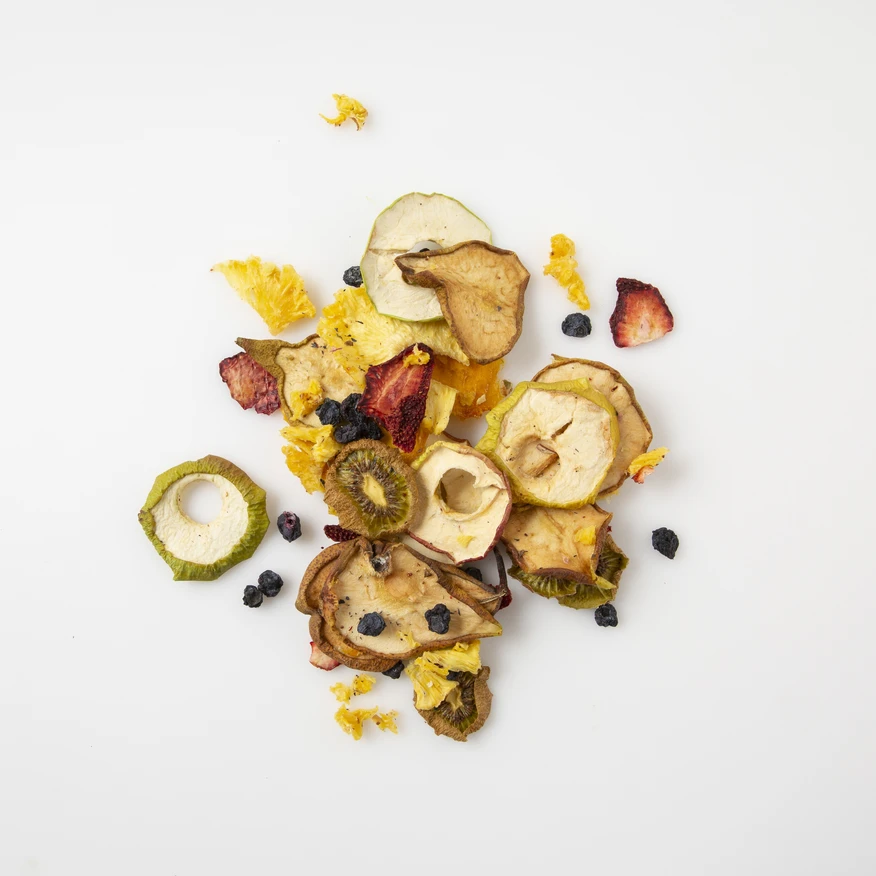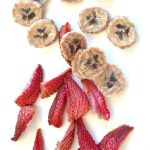What is Dried Fruit?
Dried fruit good for you!Dried fruit is fruit with most of its water content removed. This age-old preservation method enhances the fruit’s shelf life significantly. People have dried fruit using the sun for millennia. Nowadays, you can use ovens or dehydrators to do the job at home. Alternatively, a wide variety of dried fruits are available in stores. Popular choices include raisins, dried cranberries, and dried apricots. You can find everything from dried mangos to peach slices and pineapple.

Nutritional Benefits of Dried Fruit
Dried fruit offers many health benefits. It retains most nutrients of fresh fruits. These include vitamins, minerals, and fiber. Potassium, iron, magnesium, and calcium are abundant in dried fruits. Antioxidant-rich options like raisins, dates, and dried cranberries provide anti-inflammatory benefits. They are rich in dietary fiber, which aids digestion and maintains regular bowel movement. Though drying slightly reduces some nutrients like vitamin C, most remain intact. Hence, dried fruits are a compact source of intense nutrition.
The Sugar and Calorie Content of Dried Fruit
When considering ‘Is dried fruit good for you?’, it’s crucial to examine sugar and calorie content. Dried fruit is much sweeter than fresh since dehydration concentrates its sugars. For example, dried apples have five times the sugar of fresh apples per hundred grams. Some manufacturers add extra sugar, raising sweetness and calorie intake. To avoid added sugars, check the product’s ingredients list and nutrition label.
It’s also denser in calories compared to fresh fruit. This is because the sugars left after water removal are highly concentrated. For mindful eating, portion control is essential. Since dried fruits are smaller than their fresh counterparts, it’s easy to overeat. You might unknowingly consume triple the amount you would have with fresh fruit.
Ideally, aim to consume dried fruit in half the portion of its fresh equivalent. For balanced nutrition, consider dried fruit as an occasional treat, not a daily staple.

Comparing Dried and Freeze-Dried Fruit
When choosing between dried and freeze-dried fruit, it’s important to understand their differences. Both methods remove water, which extends shelf life, but they do so in distinct ways.
Dried Fruit Process
In traditional drying, fruits are exposed to heat, either from the sun or a device like an oven or dehydrator. The heat causes the water inside the fruit to evaporate. This process concentrates the fruit’s natural sugars, making it sweeter and reducing its size. The resulting product is chewy and dense in both flavor and calories.
Freeze-Dried Fruit Method
Conversely, freeze-dried fruit is frozen and then placed in a vacuum. The freezing process turns the water directly from ice to vapor, bypassing the liquid state. This method preserves the fruit’s structure and original taste better than traditional drying methods. Freeze-dried fruit often has a light, airy, and crunchy texture.
Nutrient Retention
Freeze-drying retains most of the nutrients since it doesn’t use heat. Traditional drying slightly diminishes some heat-sensitive vitamins like vitamin C, but both methods maintain a large amount of minerals and fiber.
Caloric Density
Regardless of the method, fruit good for you in terms of nutrient concentration, but it’s also higher in sugar and calories compared to fresh fruit. Manufacturers may also add sugar to enhance flavor, especially in traditionally dried fruits.
To maintain a balanced diet and enjoy the benefits of fruit, consumed in moderation, freeze-dried fruits offer an alternative with potentially less sugar and more preserved nutrients. Pay attention to labels for added sugars and remember that dried fruits are more calorie-dense than their fresh counterparts.
Portion Control and Moderation
Maintaining portion control is key when consuming fruit. Its condensed size makes it easy to overeat. For example, a half cup of dried cherries equals about one cup of fresh cherries. Stick to smaller portions to enjoy the sweet taste without excess calories.
Moderation is essential to maximize the health benefits while managing calorie intake. Treat dried fruit as a special snack rather than a regular part of meals. For balanced nutrition, mix a few pieces of dried fruit with nuts or yogurt. This approach helps avoid the sugar and calorie overload that might come from enjoying dried fruit alone.
To effectively use fruit in your diet, always check the label for added sugars. Choose natural, unsweetened versions to get the nutritional benefits without extra sweetness. Finally, remember that while dried fruit is nutritious, it’s not a substitute for fresh fruit but rather a handy and delicious alternative, especially for on-the-go snacks or special treats.

Fresh vs. Dried Fruit: When to Choose Which
Choosing between fresh and dried fruit depends on your needs. Fresh fruit, due to its high water content, is more hydrating and less calorie-dense compared to dried fruit. It’s an excellent choice for everyday hydration and provides immediate refreshment. Fresh fruits also maintain all their nutrients without any additives or concentration of sugars.
In contrast, dried fruit offers a convenient, travel-friendly option. It’s ideal for situations where portability or a longer shelf life is necessary. Dried fruits are also more calorie-dense, making them a quick energy source during physical activities like hiking or long cycling trips. However, they contain higher sugar levels and can have added sugars, depending on the product.
Generally, opt for fresh fruits in daily diets to regulate sugar intake and boost hydration. Use dried fruits selectively, mainly when the practical benefits of longer storage and portability are required. Always check labels for added sugars if choosing dried fruits for a healthier option.
Ideal Usage of Dried Fruit in Diets
Incorporating fruit into your diet requires mindful strategies to maximize its benefits while minimizing potential downsides like high sugar and calorie content. Here are a few practical ways to use dried fruit effectively in your dietary routine:
- As a Garnish: Sprinkle small amounts of fruit on salads, yogurt, or oatmeal. This adds a burst of sweetness and nutrients without overdoing the portions.
- In Trail Mixes: Combine fruit with nuts and seeds for a balanced trail mix. This mixture provides good fats, protein, and fibers along with the sweetness of the fruit.
- In Baking: Use fruit to enhance the flavor and nutritional value of baked goods. They work well in muffins, scones, and bread, providing natural sweetness and texture.
- Portion-Controlled Snacks: Pre-portion fruit into small bags or containers. This helps control the amount consumed and prevents overeating.
- Hydration Reminder: Pair a small serving of fruit with a large glass of water. Dried fruits are less hydrating than fresh fruits, so it’s important to drink more water when consuming them.
By following these suggestions, fruit can be a healthy, convenient addition to your diet, especially when consumed in moderation and with attention to portion sizes. Remember, while dried fruit is beneficial, it does not replace the need for fresh fruits, which provide essential hydration and fewer calories.
The Role of Dried Fruit in Active Lifestyles
For those with an active lifestyle, fruit can be a helpful energy booster. The convenience of fruit makes it a favorite for hikers, cyclists, and runners. Here’s how dried fruit fits into an active lifestyle:
- Quick Energy Source: Dried fruits provide concentrated energy for endurance activities. They are easy to pack and consume, even on the move.
- Portable Nutrition: Dried fruits don’t require refrigeration. This makes them perfect for long outings where fresh fruit may spoil.
- Weight Conscious: When weight is a concern, as in backpacking, fruit is lighter than fresh fruit. Yet, it still delivers essential nutrients like iron and potassium.
- Post-Workout Recovery: After exercise, the natural sugars in fruit can help replenish glycogen stores quickly.
Remember, while fruit is beneficial for active individuals, moderation is still important. It’s good to combine dried fruit with proteins or nuts, to balance the intake of sugars and provide sustained energy. Also, remember to stay hydrated, as dried fruit lacks the water content of fresh fruit.
In conclusion, fruit can be a practical and nutritious snack for those with an active lifestyle, as long as it is consumed mindfully, with attention to portion sizes.


